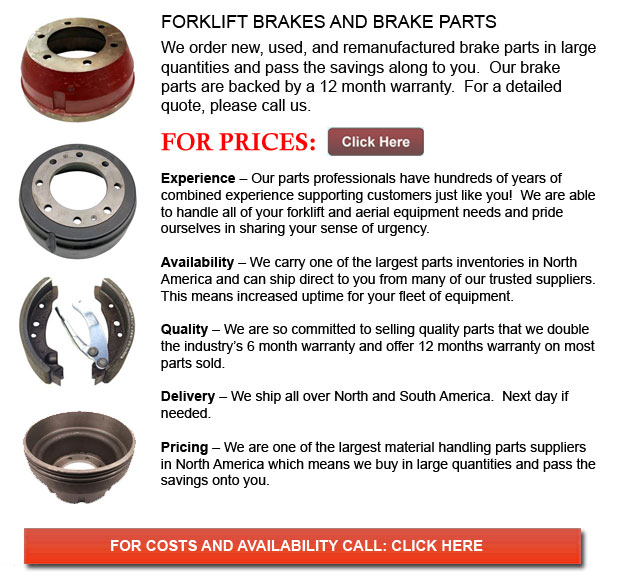
Forklift Brakes - A brake drum is in which the friction is provided by the brake shoes or brake pads. The pads or shoes press up against the rotating brake drum. There are several different brake drums kinds along with certain specific differences. A "break drum" will generally refer to whenever either shoes or pads press onto the inner outside of the drum. A "clasp brake" is the term utilized to describe if shoes press next to the outside of the drum. Another type of brake, known as a "band brake" makes use of a flexible band or belt to wrap all-around the exterior of the drum. If the drum is pinched in between two shoes, it could be called a "pinch brake drum." Similar to a standard disc brake, these kinds of brakes are quite uncommon.
Before the year 1995, early brake drums required consistent modification periodically in order to compensate for drum and shoe wear. "Low pedal" or long brake pedal travel is the hazardous end result if modifications are not carried out satisfactorily. The motor vehicle can become dangerous and the brakes can become useless when low pedal is combined along with brake fade.
There are quite a few various Self-Adjusting systems for braking obtainable nowadays. They could be classed into two separate categories, the RAD and RAI. RAI systems are built in systems which help the tool recover from overheating. The most popular RAI manufacturers are Bendix, Lucas, Bosch and AP. The most famous RAD systems include Ford recovery systems, Volkswagen, VAG, AP and Bendix.
Self-repositioning brakes usually use a tool that engages only if the vehicle is being stopped from reverse motion. This stopping method is suitable for use where all wheels make use of brake drums. The majority of vehicles nowadays utilize disc brakes on the front wheels. By operating only in reverse it is less probable that the brakes will be applied while hot and the brake drums are expanded. If adjusted while hot, "dragging brakes" could happen, which raises fuel intake and accelerates wear. A ratchet device that becomes engaged as the hand brake is set is one more way the self repositioning brakes could function. This means is only suitable in applications where rear brake drums are utilized. Whenever the emergency or parking brake actuator lever goes beyond a certain amount of travel, the ratchet developments an adjuster screw and the brake shoes move in the direction of the drum.
Located at the base of the drum sits the manual adjustment knob. It can be adjusted making use of the hole on the other side of the wheel. You would have to go underneath the vehicle together with a flathead screwdriver. It is very essential to be able to adjust every wheel equally and to move the click wheel properly in view of the fact that an unequal adjustment can pull the vehicle one side during heavy braking. The most effective method in order to make sure this tiresome task is done safely is to either lift each wheel off the ground and hand spin it while measuring how much force it takes and feeling if the shoes are dragging, or give every\each and every one the same amount of clicks utilizing the hand and then do a road test.
![]() Click to Download the pdf
Click to Download the pdf
Forklift Parts
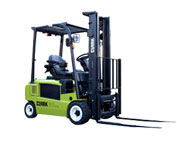
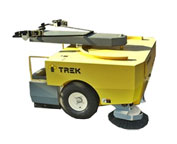
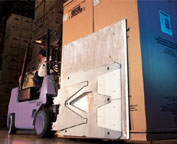
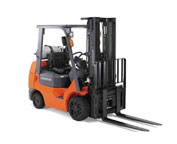
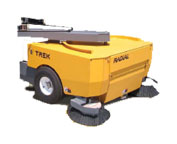
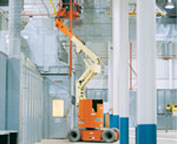
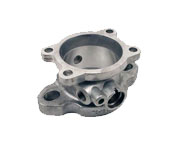
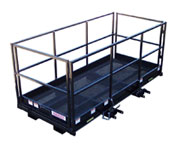
Lift Parts Express
TOLL FREE: 1-888-695-7994
Calgary, Alberta
forkliftpartscalgary.ca
Email Us
About Us


